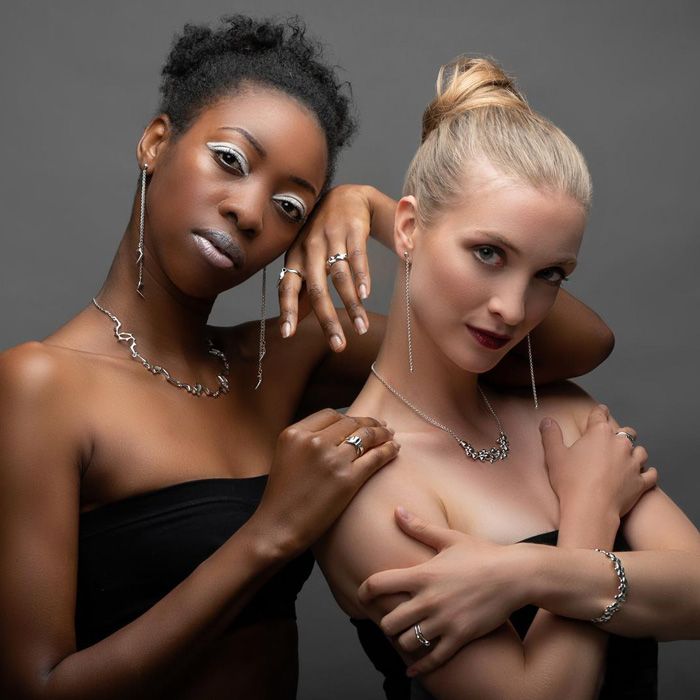Choosing your wedding rings is a lot easier than choosing an engagement ring, however there are a few things to consider before you make a decision.
Below is a simple guide to wedding rings.
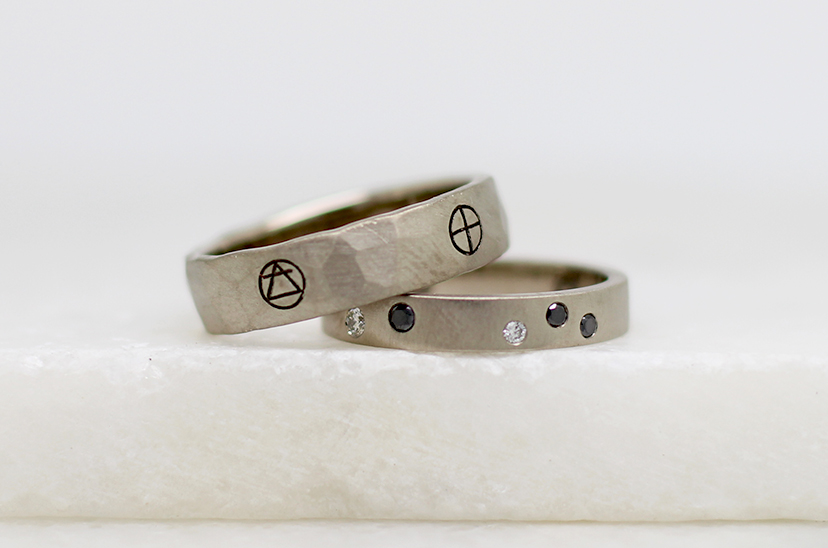
Choosing the metal
It is important to choose a durable metal for your rings to guarantee longevity.
Gold is the most popular choice when it comes to wedding rings, it is available in 3 different colours: yellow, white & red.
Platinum bands are also becoming very popular, they are very durable, therefore are a great option for people with manual jobs.
Silver is not as durable as gold or platinum; for that reason, we do advice against having your wedding rings made out of this metal.
If you choose to stack your wedding and your engagement ring together on the same finger, it is important that there are both crafted out of the same metal. This is to avoid a harder metal wearing down a softer metal. If you opt for gold, there are no rules when it comes to combining metal colours as long as the gold in both rings is of the same carat (same hardness).
See our metals guide for more info.
Thickness and width
It is recommended to choose a minimum width of 2 mm and a minimum thickness of 1.5 mm to ensure the durability of your rings.
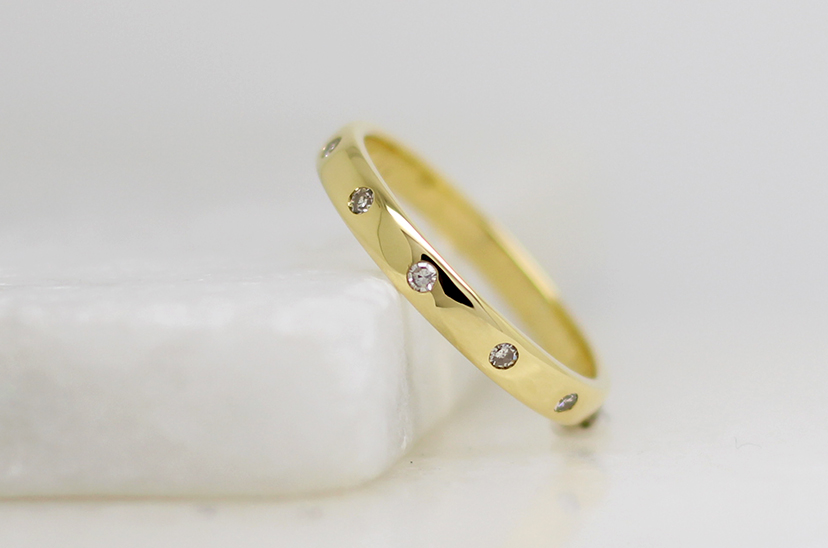
Size
Before choosing your ring, it is important that you get the correct finger measured by a professional, to determine your ring size. Your ring should be snug over your knuckle, it will need a little wiggle to get over it. You don’t want your ring to come off when you have wet or cold hands.
It’s good to know if your hands swell up in the heat or when you sleep, if this is the case you might have to go ½ size up.
See our ring sizes guide for more information.
Profile
The profile, or the shape, of a wedding ring is determined by looking at the cross section of a ring. The choice of profile for your ring comes down to personal style, comfort and is a completely individual decision.
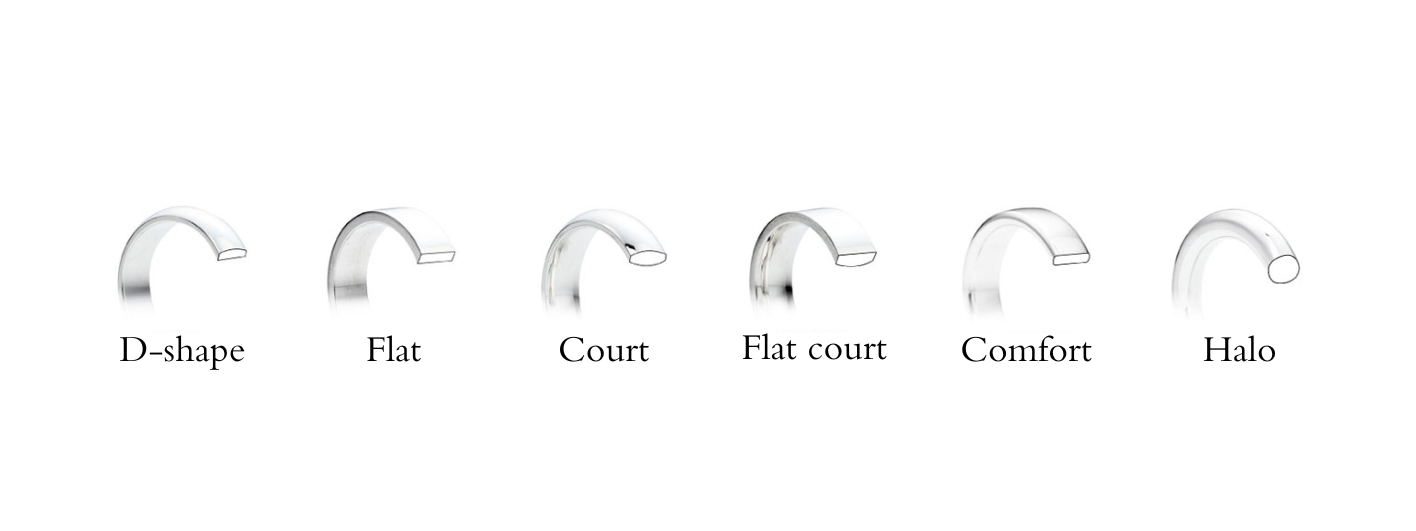
Personalisation
You can add a personal touch with a message, a meaningful word, a symbol, names or a special date engraved on the inside of your new wedding ring.
Another great way to personalise your wedding band is by adding a few stones or diamonds in the design.
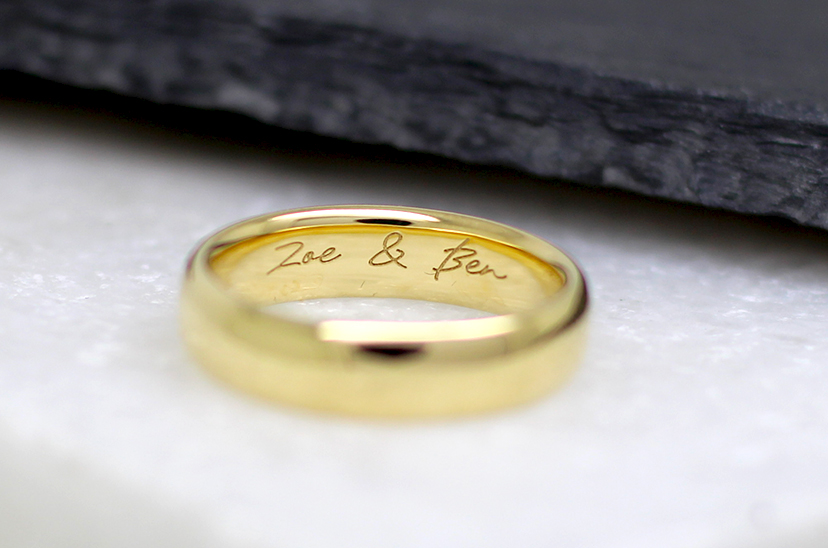
Fitted wedding band
A shaped or fitted wedding band (typically a U or V shape) is designed to follow the outlines of your engagement ring. So, that when both rings are worn together (on the same finger), they sit flush on top of each other.
Our online shop offers a range of ready to wear wedding rings designed to complement your engagement ring.
To have your wedding band matching the exact same profile of your engagement ring, choose to have it custom made via our bespoke service.
Tips if you are having bespoke wedding rings made specially for you
- Make sure you allow plenty of time before the wedding, to have your wedding rings made. We recommend a minimum of 8-12 weeks.
- If you have a budget in mind, it’s important that you let us know at the beginning, so that we can recommend the best materials and create the design within your budget.
- We suggest that you try on a few different wedding ring samples to get a feel for the style and width you like best.
- Decide if you want to have matching wedding rings or have some element tying the two rings together.
A bit of history
The ancient ritual of placing a wedding band on each partner’s finger dates back to ancient Egypt. The circle was a symbol of eternity and was used to represent the union of the heart. Up until this time rings were generally made out of hemp, leather, bone, or ivory whilst metal rings gradually appeared at a later period. The Western traditions of wedding rings can be traced back to ancient Rome and Greece and were first associated with the marital dowry and later a promise of fidelity. The modern exchange of rings was reintroduced in the Middle Ages as part of Christendom.
Matching rings
The double-ring ceremonies, where the groom also gets a wedding band did not become common until the 20th century. The traditional choice today is a matched set; however, many couples take the non-traditional route and choose different wedding rings.
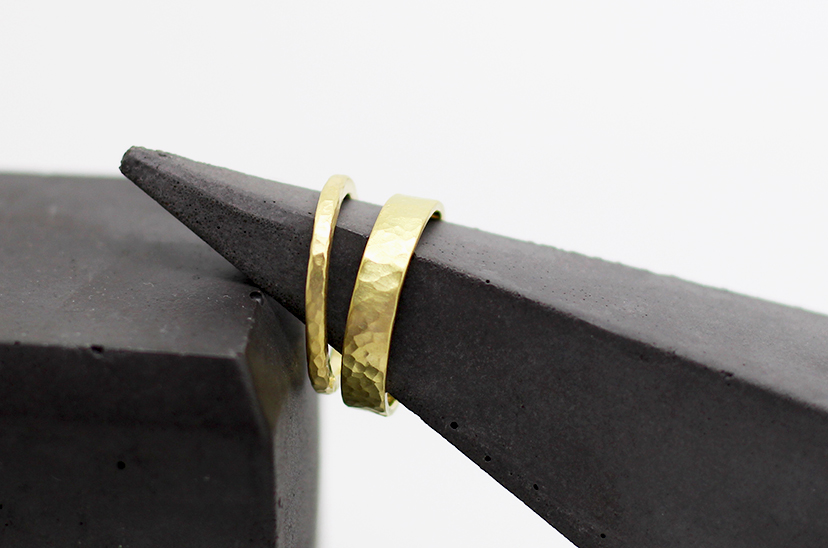
Which hand?
Brides and grooms traditionally placed a wedding band on the third finger of each other’s left hand because people once believed the “Veina Amoris” (latin for vein of love), ran directly from that finger to the heart. Medical science eventually corrected this belief; however, the tradition still lives on.
Today traditions can vary depending on the culture, country, or religion regarding which finger and hand the ring is worn on. Most couples in England and America wear their wedding rings on the left hand just like the ancient Egyptians, whereas Eastern Europeans and Orthodox Christians tend to wear the wedding band on the right hand, which stems from ancient Roman custom. The Latin word for left is “sinister” and carries the same connotation as the English word, whereas the word for right is “dexter”, a word that evolved into “dexterity”, hence therefore the left hand had a perceived negative connotation and the right a good one. Jewish couples wear the wedding ring on the left hand, even though it is placed on the right hand during the marriage ceremony. In the Netherlands, catholic people wear it on the left, whilst all the other catholic people wear it on the right.
Before tying the knot, it may be worth checking out the jewellery customs in your country or culture, however the choice and decision on which finger and hand to wear your ring is ultimately of course your own!
From traditional to truly personal wedding rings we can make your idea come to life through our bespoke service.
Alternatively, you can shop our range of made to order ethical wedding rings online.

